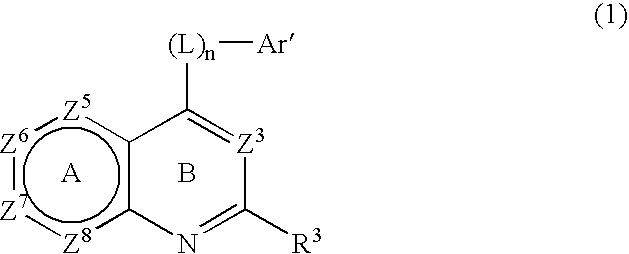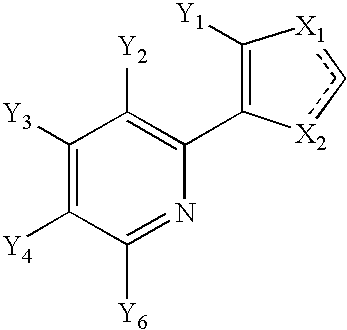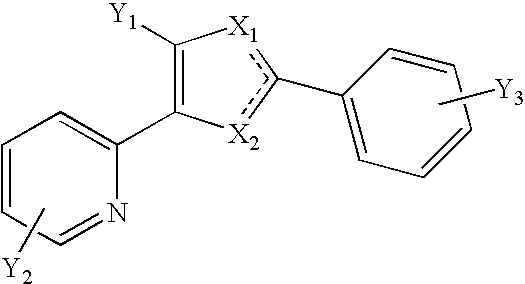Use of TGF-beta inhibitors to counteract pathologic changes in the level or function of steroid/thyroid receptors
a technology of tgf-beta and inhibitors, which is applied in the field of tgf-beta, can solve the problems of reducing the efficacy of corticosteroid therapy, reducing the efficacy of retinoid treatment, and down-regulation of retonic acid receptors, so as to reduce e.g. in cancer therapy, and reducing the efficacy of thyroid hormone treatmen
- Summary
- Abstract
- Description
- Claims
- Application Information
AI Technical Summary
Problems solved by technology
Method used
Image
Examples
example
[0191] Cell Preparations
[0192] Normal rat kidney cells (NRK) were cultured in DMEM-21 (high glucose) / 10% FCS at 37.degree. C., 5% CO2. Cells were serum starved for 24 hr before treated with 5 ng / ml huTGF-b1 (R&D System) or co-treatment with 1 .mu.M Compound No. 81 or 0.1 .mu.M Compound No. 74 for 24 hours.
[0193] Rat lung fibroblasts (RLF) were isolated from perfused rat lung by physical and enzymatic dissociation of lung tissue. Immunocytochemistry revealed most of the cells as fibroblasts. RLFs were cultured in FGM-2 with 2% FBS (Clonetics # CC-3132). Cells were serum starved for 24 hours, followed by the treatment with 15 ng / ml TGF.beta.1 (R&D System) or co-treatment with 1 .mu.M Compound No. 81 or 0.1 .mu.M Compound No. 74 for 24 hours.
[0194] Human lung fibroblasts (Cambrex Bio Science) from a 40 year old female were seeded at 4.times.10.sup.5 cells (passage 4) in 100 mm dishes and cultured in complete FGM medium (Cambrex Bio Science). The next day, medium was changed to FGM with...
PUM
 Login to View More
Login to View More Abstract
Description
Claims
Application Information
 Login to View More
Login to View More - R&D
- Intellectual Property
- Life Sciences
- Materials
- Tech Scout
- Unparalleled Data Quality
- Higher Quality Content
- 60% Fewer Hallucinations
Browse by: Latest US Patents, China's latest patents, Technical Efficacy Thesaurus, Application Domain, Technology Topic, Popular Technical Reports.
© 2025 PatSnap. All rights reserved.Legal|Privacy policy|Modern Slavery Act Transparency Statement|Sitemap|About US| Contact US: help@patsnap.com



